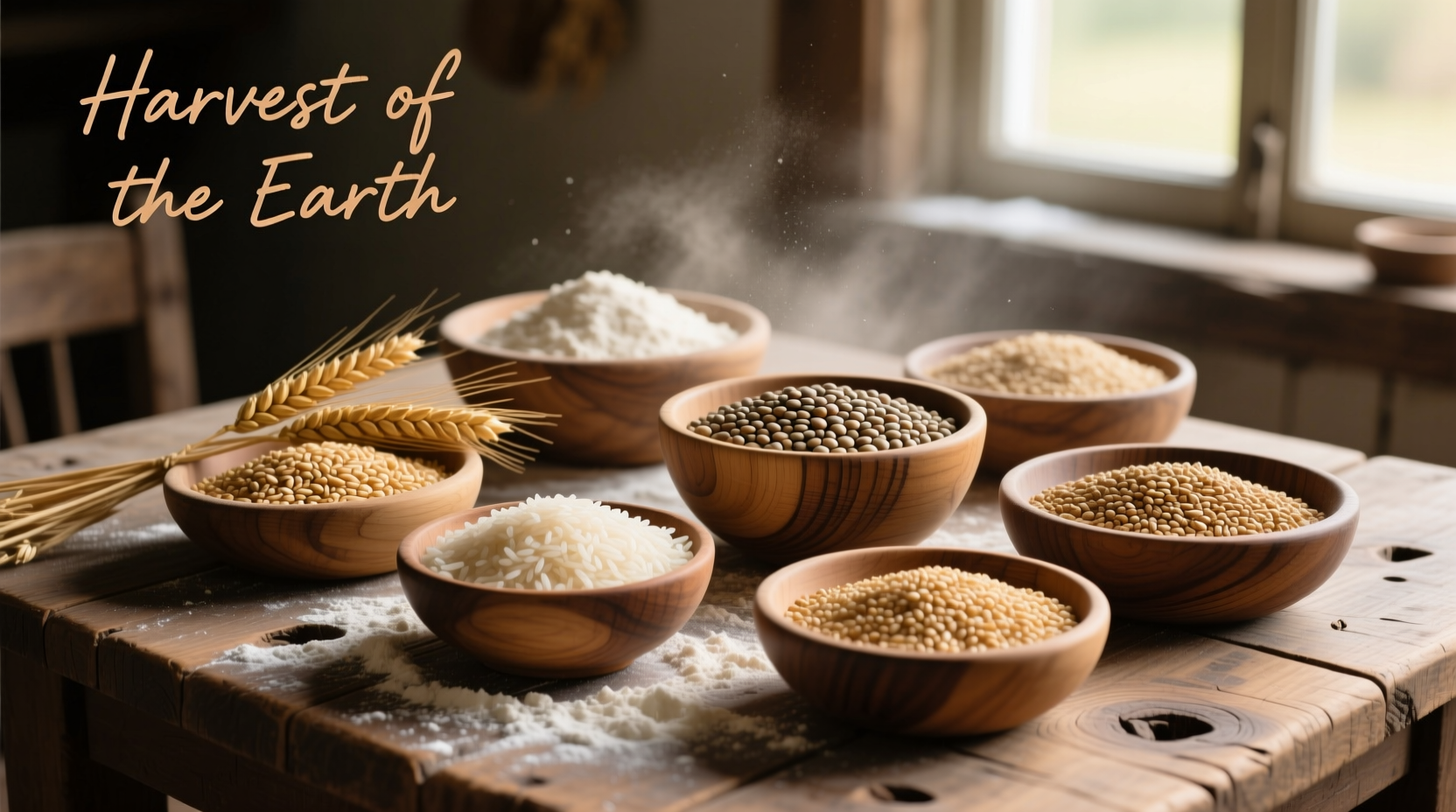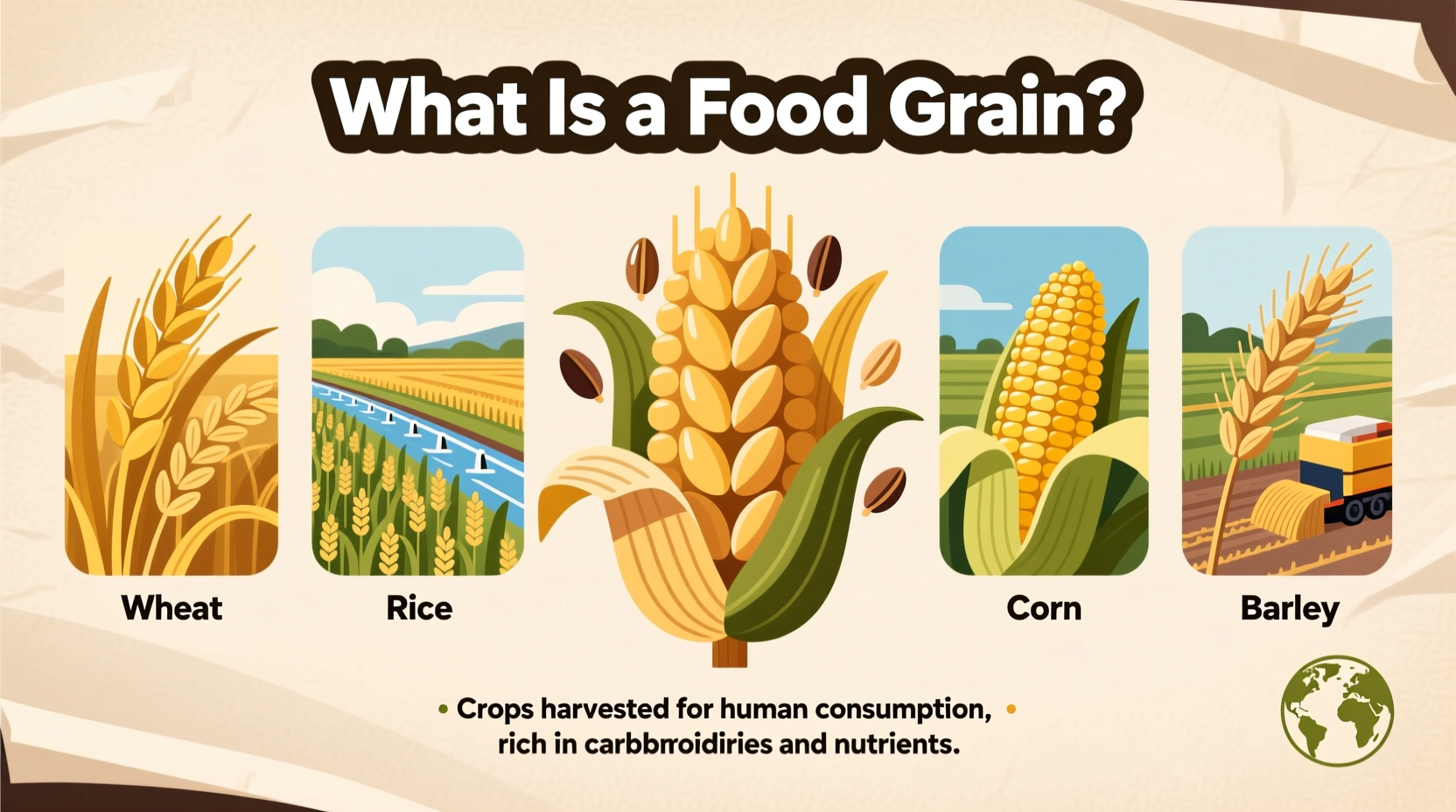Food grains are small, hard, dry seeds—cereals or legumes—harvested for human or animal consumption. They include staple crops like wheat, rice, corn, barley, oats, and sorghum, which provide over 50% of global caloric intake and form the foundation of food security worldwide.
Understanding what qualifies as a food grain helps you make informed dietary choices and appreciate agriculture's role in civilization. Whether you're a student researching for an assignment, a health-conscious eater, or simply curious about staple foods, this guide delivers scientifically accurate information about grains' composition, varieties, and significance in human nutrition.
Defining Food Grains: More Than Just Wheat and Rice
Food grains encompass both cereal grains (from grass family plants) and pseudocereals (non-grass plants with grain-like seeds). The key characteristic? They're harvested in dry form when fully mature, making them shelf-stable and transportable—critical factors in their historical role as civilization's fuel.
True cereal grains always contain three essential components:
- Bran - The fiber-rich outer layer packed with B vitamins
- Endosperm - The starchy middle providing carbohydrates and protein
- Germ - The nutrient-dense core containing healthy fats and vitamin E
When all three parts remain intact after processing, we call it a whole grain. Refined grains lose the bran and germ during milling, stripping away 25% of protein and up to 80% of nutrients.
Major Food Grain Categories Explained
Not all grains fit the same botanical profile. Understanding these distinctions helps you select varieties that match your nutritional goals and culinary needs.
| Grain Type | Primary Growing Regions | Nutritional Highlights | Common Culinary Uses |
|---|---|---|---|
| Wheat | China, India, Russia, USA | High protein, B vitamins, iron | Bread, pasta, pastries |
| Rice | China, India, Indonesia, Bangladesh | Carbohydrates, some protein | Staple food, sushi, desserts |
| Maize (Corn) | USA, China, Brazil, Argentina | Vitamin A, fiber, antioxidants | Polenta, tortillas, animal feed |
| Barley | Russia, Australia, Germany, France | Beta-glucan fiber, selenium | Soups, brewing, health foods |
| Quinoa (pseudocereal) | Peru, Bolivia, Ecuador | Complete protein, iron, magnesium | Salads, breakfast bowls, side dishes |
This comparative overview shows why dietary diversity matters—different grains offer unique nutritional profiles that complement each other when included in balanced diets. The Food and Agriculture Organization confirms that grain diversity historically protected societies against crop failures and nutritional deficiencies.
How Grain Cultivation Shaped Human Civilization
The domestication of food grains represents one of humanity's most transformative developments. Consider this evolutionary timeline:
- 10,000 BCE - First wheat and barley cultivation in the Fertile Crescent (modern-day Iraq, Syria, Turkey)
- 8,000 BCE - Rice domestication begins in China's Yangtze River Valley
- 5,000 BCE - Maize (corn) domestication starts in Mexico's Balsas River Valley
- 3,000 BCE - Millet and sorghum cultivation spreads across Africa
- 1830s - Mechanical threshers revolutionize grain harvesting
- 1940s-1960s - Green Revolution introduces high-yield grain varieties
- Present - Focus shifts to climate-resilient grains and sustainable farming practices
According to research published by the Nature journal, the transition from hunter-gatherer societies to grain-based agriculture increased global population density by 60-fold. This historical context explains why grains remain culturally significant across virtually all societies today.

Nutritional Powerhouses: Why Grains Matter for Health
Despite recent low-carb diet trends, properly prepared grains offer substantial health benefits. The Dietary Guidelines for Americans recommends making at least half your grains whole grains for optimal health outcomes.
Scientific evidence shows regular whole grain consumption:
- Reduces risk of heart disease by 22% (American Heart Association)
- Lowers type 2 diabetes risk by 29% (British Medical Journal)
- Supports healthy gut microbiome through resistant starch
- Provides sustained energy release compared to refined carbohydrates
When selecting grains, pay attention to processing methods. Traditional techniques like soaking, sprouting, or sourdough fermentation increase nutrient bioavailability and reduce antinutrients like phytic acid—knowledge preserved in many indigenous grain preparation traditions worldwide.
Practical Guidance for Grain Selection and Preparation
Transform your understanding of food grains into actionable kitchen practices with these evidence-based recommendations:
Choosing Quality Grains
- Look for "100% whole grain" labels rather than "multigrain" (which may contain refined flours)
- Check ingredient lists—whole grains should appear first
- Consider heritage varieties like einkorn wheat or black rice for enhanced nutrition
- Buy from reputable sources that disclose growing practices
Optimal Preparation Methods
- Soaking - Reduces cooking time and improves digestibility (8-12 hours for most grains)
- Sprouting - Increases vitamin content and reduces antinutrients
- Fermentation - Creates beneficial probiotics and enhances nutrient absorption
- Proper cooking - Use 2-3 parts water to 1 part grain for most varieties
Remember that different grains have unique preparation requirements. For example, quinoa needs rinsing to remove saponins, while brown rice benefits from extended soaking. These small adjustments significantly impact both nutritional value and culinary results.
Common Misconceptions About Food Grains
Several persistent myths cloud public understanding of grains. Let's clarify with science-based facts:
- Myth: All grains contain gluten
Fact: Only wheat, barley, and rye contain gluten. Rice, corn, oats (if uncontaminated), and pseudocereals like quinoa are naturally gluten-free - Myth: Grains cause weight gain
Fact: Whole grains actually support weight management through high fiber content and sustained satiety. The issue lies with refined grain products and added sugars - Myth: Ancient humans didn't eat grains
Fact: Archaeological evidence from Israel shows grain processing dating back 23,000 years, long before agriculture began
Understanding these distinctions helps you make informed choices based on actual nutritional science rather than popular diet trends.
Looking Ahead: The Future of Food Grains
As climate change impacts agriculture, researchers are developing more resilient grain varieties. The International Maize and Wheat Improvement Center reports that drought-tolerant maize varieties now feed 30 million people across Africa. Similarly, ancient grains like teff and fonio are gaining attention for their nutritional density and climate adaptability.
For consumers, this means expanding your grain repertoire beyond wheat and rice. Exploring diverse grains supports both personal nutrition and global food security—a small dietary change with significant collective impact.











 浙公网安备
33010002000092号
浙公网安备
33010002000092号 浙B2-20120091-4
浙B2-20120091-4